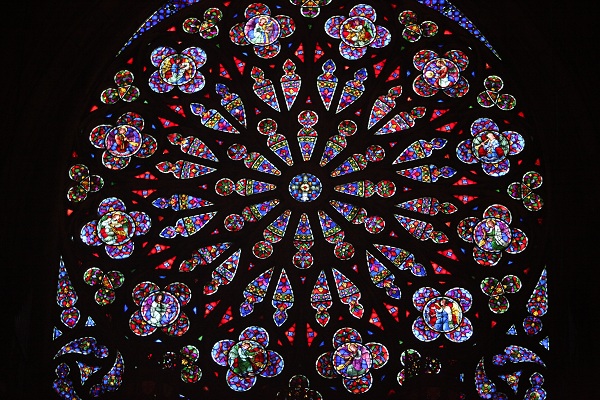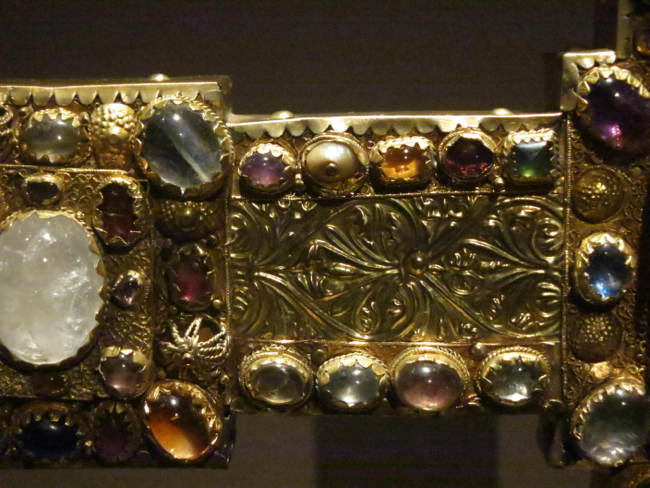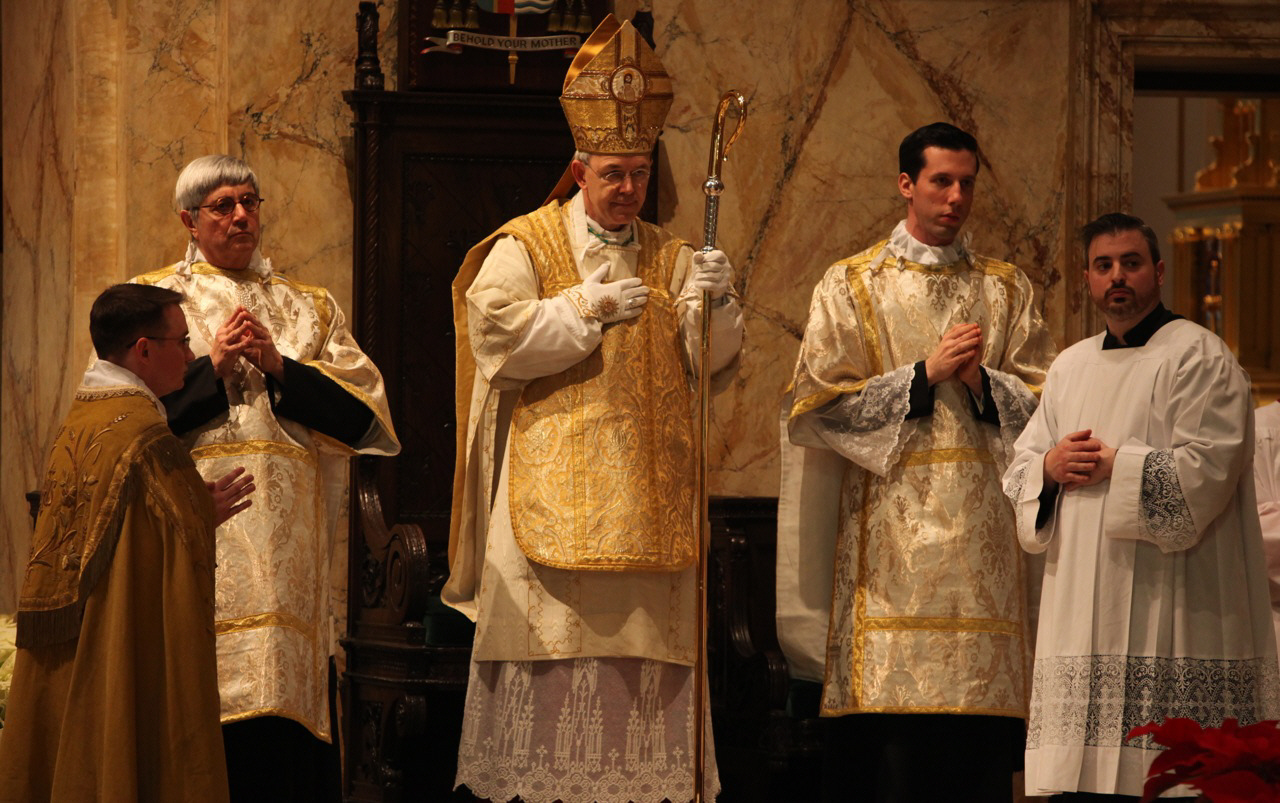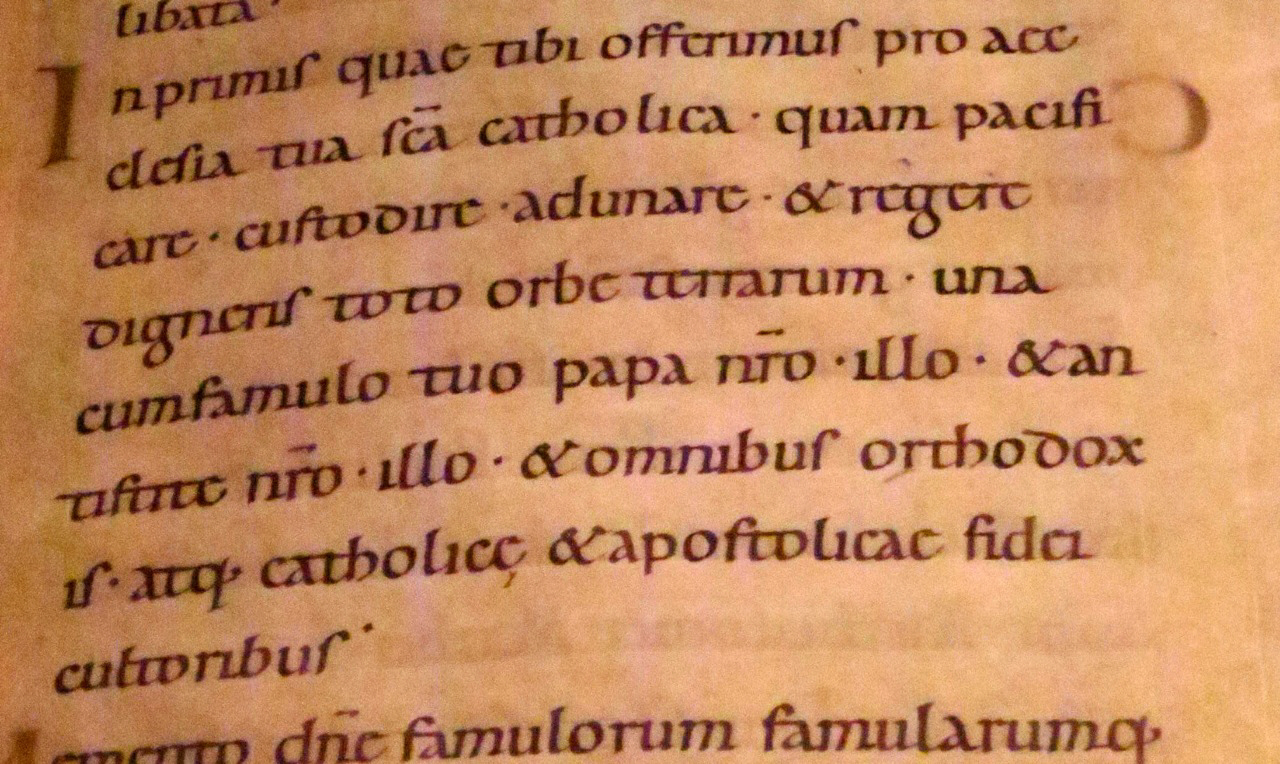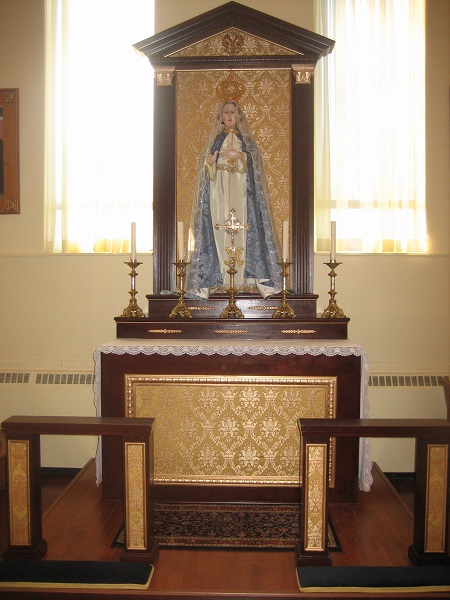
Part of the ambitious program of restoration at St. Gabriel’s, Stamford – a new altar of Our Lady.
Photo Courtesy of Fr. Cyprian LaPastina
18 Jan
2013

Part of the ambitious program of restoration at St. Gabriel’s, Stamford – a new altar of Our Lady.
Photo Courtesy of Fr. Cyprian LaPastina
15 Dec
2012
![photo[1]](https://sthughofcluny.org/wp-content/uploads/2012/12/photo11.jpg)
The continuing restoration under Fr. Cyprian La Pastina of the church of St. Gabriel, Stamford, CT. – the new altar rail.
(photo: Fr. La Pastina)
22 Oct
2012

(Photo courtesy of Rodger Phillips)
From the recent Vigil of Reparation at St. Peter’s Church, Hartford. The photo shows exposition of the Blessed Sacrament that followed the first Traditional Mass. The sermons and readings were read by Fr. Diaz in Spanish and English. Hopefully this will be a monthly event in Hartford.
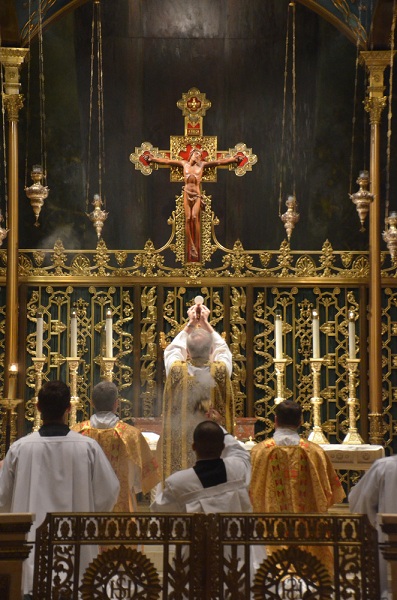
(Photo courtesy of Joel Pidel)
(Above) From the recent Ordinary Form Mass of the Catholic Artists Society at the Church of Our Saviour, New York. For more photos and music see HERE.
10 Jun
2012
First Altar of Repose, decorated by St. Mary’s Indian community
Second Altar of Repose, decorated by St. Mary’s Filipino community
Third Altar of Repose, decorated by St. Mary’s Hispanic community
Returning to the church for Benediction
1 Jun
2012
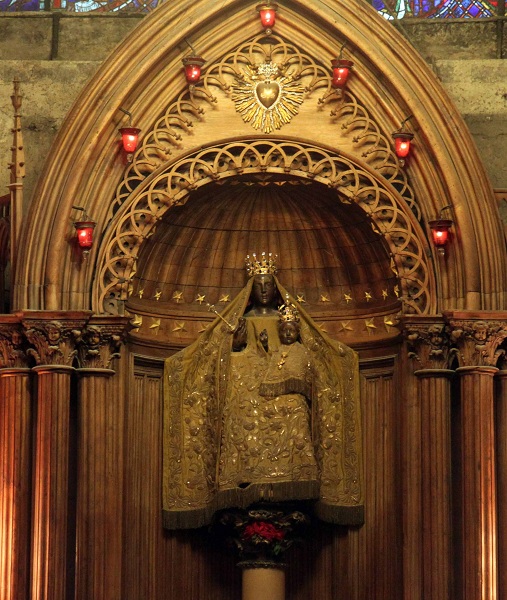
The Black Madonna or Notre Dame de Pilier.
So the 2012 pilgrimage has come to an end. Once again thanks are due to Michael Matt and the Remnant for organizing the American chapter and taking them sucessfully through all obstacles. And even greater thanks are due to the organization of Notre Dame de Chrétienté which has carried out the immense logistical work of this pilgrimage for many years now. Thanks to their work, the Chartres pilgimage maintains its status as the preeeminent Traditional Catholic celebation worldwide.
In what does this uniqueness consist? The Chartres pilgrimage is primarily a collective experience: that of withdrawing from the outside world and of marching, worshipping and resting as an organized group. And the form of worship is only what is now called the “Extraordinary Form.” It is a concrete demonstration that one does not stand alone as a Traditional Catholic, that there are other people – and other countries – sharing the same beliefs. Other pilgrimages – more “individualistic” or small group, such as the Camino – are more conducive to personal spiritual development. Such was the old students’ pilgrimage to Chartres, which Peguy began before the First World War and which died out after the Council. For, as a participant in those days – later a very senior executive at a major French enterprise – told me, the pilgrims would take a week, not 2 ½ days, to get to Chartres from Paris, and each evening would be spent in quiet conversation. Such experiences are possible but rare on the pilgrimage of Notre Dame de Chrétienté. The overall impression – other than that of one’s own fatigue – is rather that of the marching, singing and praying pilgrim community.
Over the last 20 years there has been remarkable continuity in the organization, the pilgrimage route, the location of the encampments, the divine services, the banners, the logos and even certain of the individual participants. Yet there have been shifts of emphasis. In the early 90’s the “sponsorship” of the pilgrimage was in the hands of a foundation of a more militantly counterrevolutionary and nationalist persuasion. It was at this time the pilgrimage began to attract the attention of outsiders like Gary Potter, Michael Davies and their successors, attracted to the unashamed celebration of Christendom only possible in the French counterrevolutionary tradition. By 1995 there seems to have been a distinct change of management with an increasing tendency to tone down the political edge and to pursue of greater accommodation with “Frenchchurch” and its hierarchy. Around the edges of the pilgrimage crept intrusions from the “ordinary,” “orthodox” Catholic world – pictures of John Paul II became ubiquitous, the EU was celebrated and who could forget the “singing bishop” one year trying to warm up the weary pilgrims just arrived in Chartres prior to the mass? Thankfully such excesses have disappeared in their turn. And the concept of Christendom – the union of faith, nation and political action – remains alive in the Chartres pilgrimage. Yet, for a pilgrimage having for its theme “The Family – the Cradle of Christendom” (itself a less challenging motto than those of the past!), the actions on “life issues” currently proposed by the new French government and the individuals behind them drew much less specific and forceful criticism in the sermons than they would have 20 years ago.
As for the physical pilgrimage itself and the American chapter I felt that things went smoother than ever before. After the first day the pace was reasonable, the chapter hung together and there was much more opportunity to participate in common prayer, meditation and song than in the past. And when one had to fall back one could always keep up with the energetic French groups who seem to be constantly singing. We laggards never fell too far behind. Similarly, thanks to Michael Matt’s good planning and the fair weather, the situation at the encampments was far less challenging than usual. There is always a flip side to success, however – the interaction with individuals from the various foreign countries, a main attraction of the Chartres pilgrimage, was much more limited than it had been on earlier pilgrimages. Indeed, I heard the new (to me) notion that contact with other chapters was officially “frowned upon.”
Liturgically speaking, the pilgrimage has also been remarkably consistent over the years. There have been changes of course: as Episcopal support has gradually grown, the role of the bishops has gradually increased. And this year we had a first: the mass for Saturday took place in Notre Dame itself, at the start of the pilgrimage! Yet the liturgical and musical aspects of the Pentecost Pilgrimage have remained static, while the liturgical understanding of the broader outside traditional world has come far indeed especially since Summorum Pontificum. The Pilgrimage liturgies seemed like a revelation 20 years ago to those of us who had hardly ever experienced a Solemn mass. They now, however, appear complete and correct but hardly liturgically rich or inspiring. Indeed, in many cases one now wonders about various liturgical idiosyncrasies (like the singing of a motet immediately after the consecration): are they local French traditions or more recent developments?
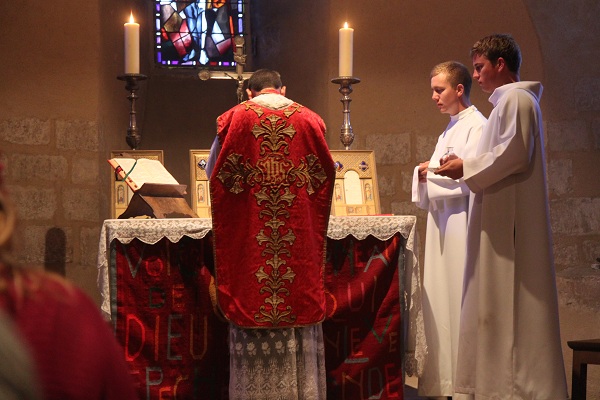
A final low mass in the Crypt of the Cathedral Tuesday for the American chapter forms a fitting end to the pilgrimage.
1 Jun
2012
The Third Day of the Pilgrimage – Pentecost Monday.
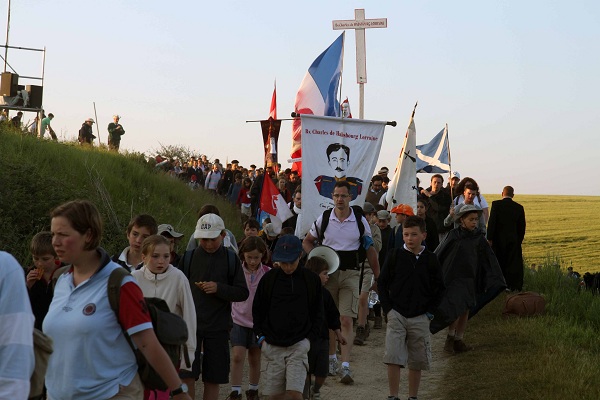
The chapter of Blessed Karl of Hapsburg -Lorraine (nice of the French – he was on the other side in the Great War).
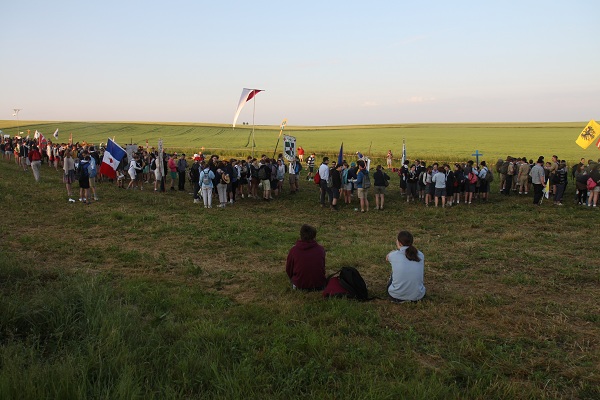
The pilgrims assemble. On the third day many families have joined the march. It is claimed that the overall number of pilgims swelled to 10,000-15,000 on this day.
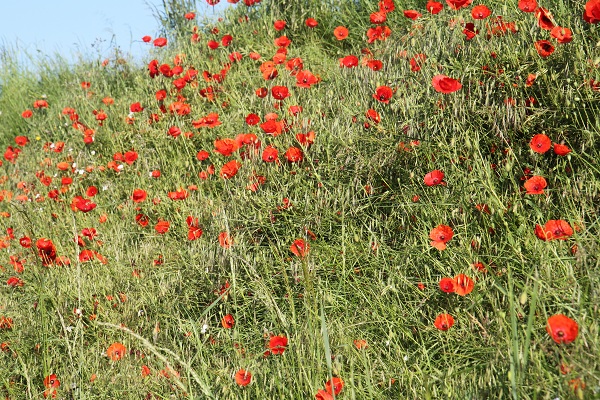
The pigrimage route crosses fields filled with flowers.
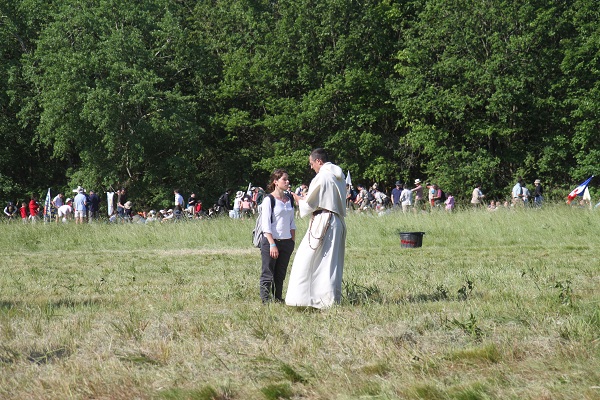
Confession in the fields during a pause in the pilgrimage.
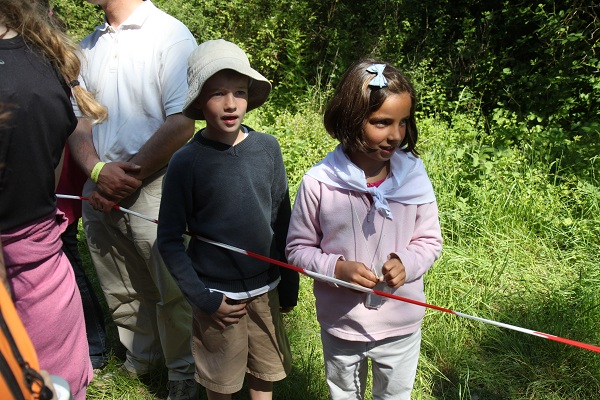
The pilgrims are often greeted by appreciative spectators on the last day.
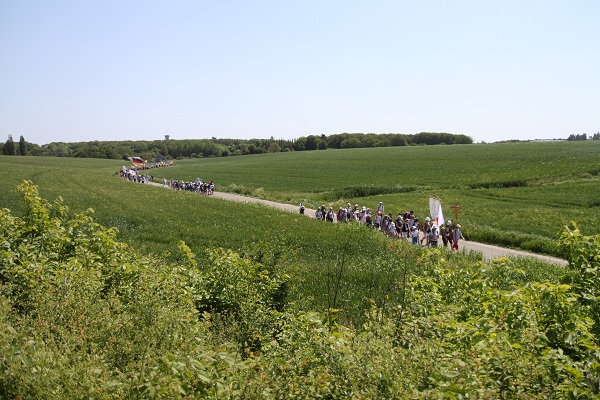
Because of the open and gently rolling terrain crossed on Monday a pilgrim can finally get an idea of the sheer number of participants.

It is the third day of marching in the heat and the last leg of the pilgrimage begins to take a toll.
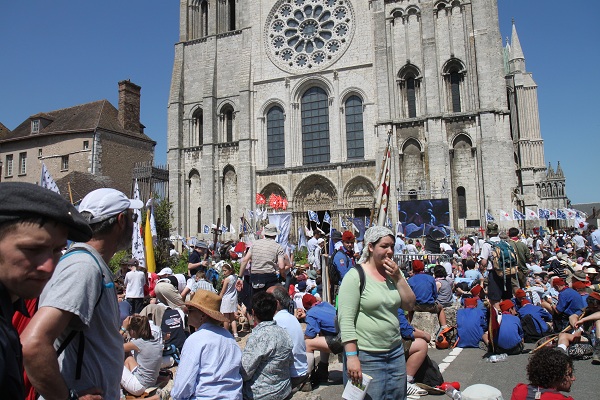
Misfortune for the Americans – just as in 2010 they must sit outside in the blazing sun. ( There is a rotation of chapters who enter the cathedral each year since the cathedral cannot accomodate all the pilgrims.)
31 May
2012
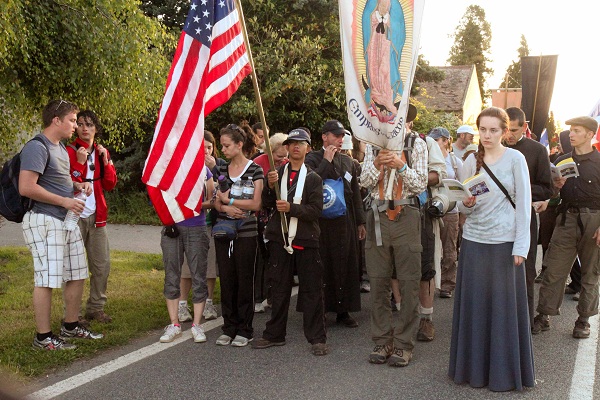
A weary American chapter forms for the next day’s march.
The second day is Pentecost Sunday.
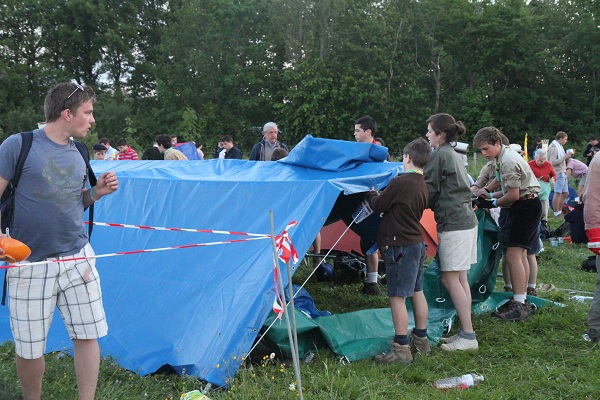
The tents are dissasembed by volunteers.
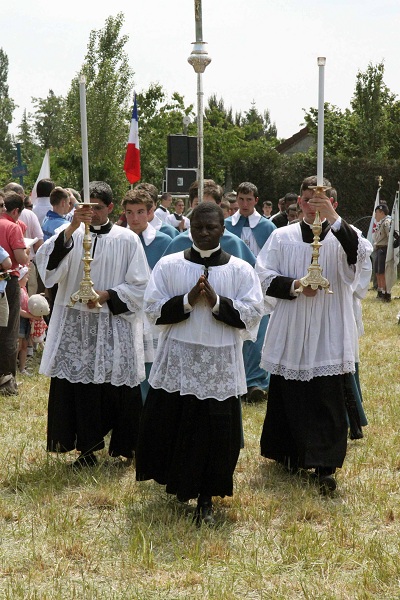
The procession to the altar on Pentecost Sunday.

Surrounded by the scouts’ ensigns and the banners of the pilgrimage.
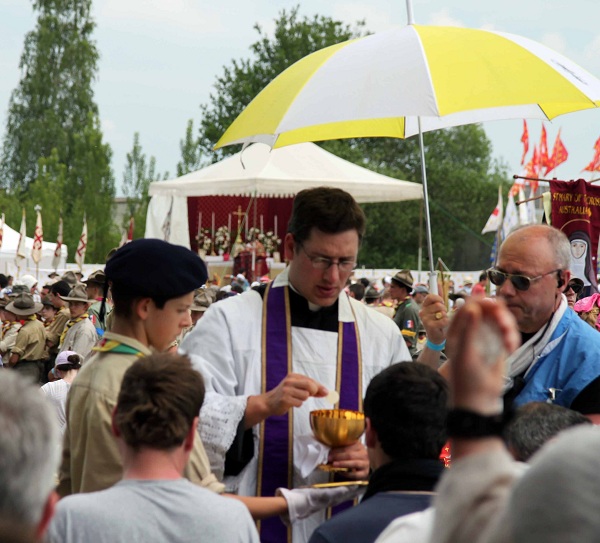
Communion is distributed under brilliant sunshine and in sweltering heat.
31 May
2012
There will be many reports and many photographs of the 2012 Paris to Chartres pilgrimage – including those of the official site. Instead of offering an additional chronicle of the three days, however, I only wish to show a few aspects of each day’s events.
After 5 in the morning on Saturday the pilgrims gathered before Notre Dame in Paris. The next three days would be very warm (85 degrees Fahrenheit) and dry.
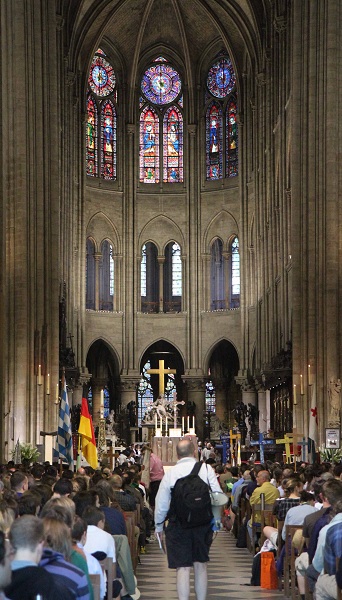
The pilgrims assembled in their chapters in the cathedral and (generally) sit on the floor.
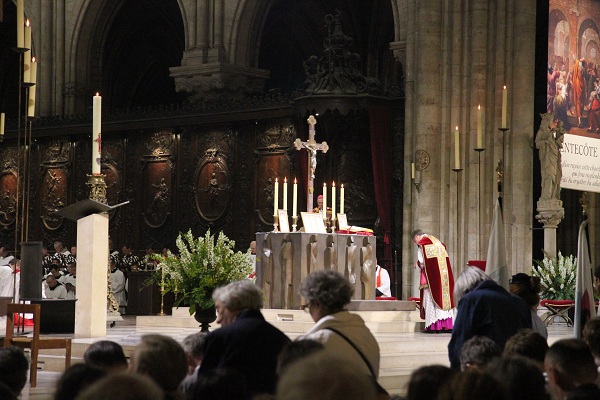
In a first, the pilgrimage begins with a Missa Cantata in Notre Dame. It is further alleged that this is the first Traditional Mass in Notre Dame since the 1960’s – can this be correct? The epistle and gospel are read in French. But the hymns always sound great when intoned by thousands.
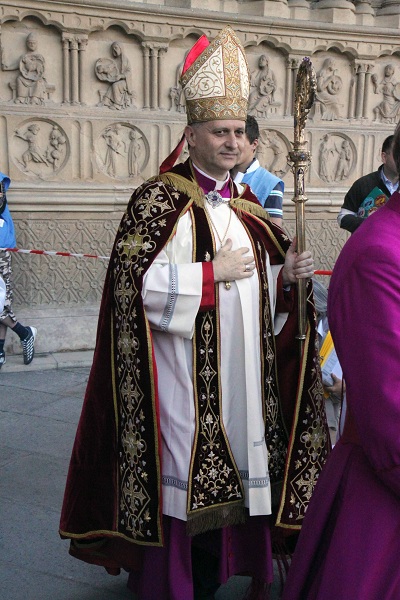
In contrast to an earlier era, episcopal approval is evident.
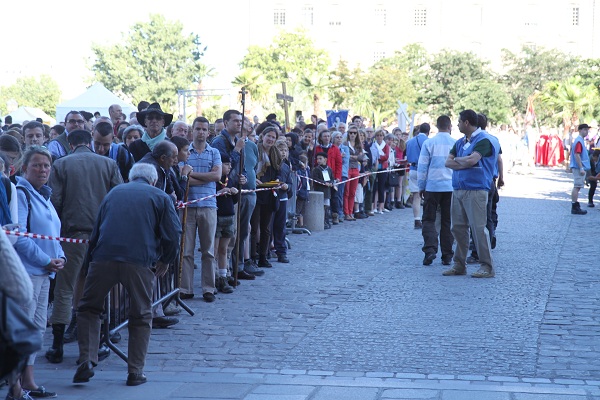
A crowd awaits the emergence of the pilgrims from Notre Dame.
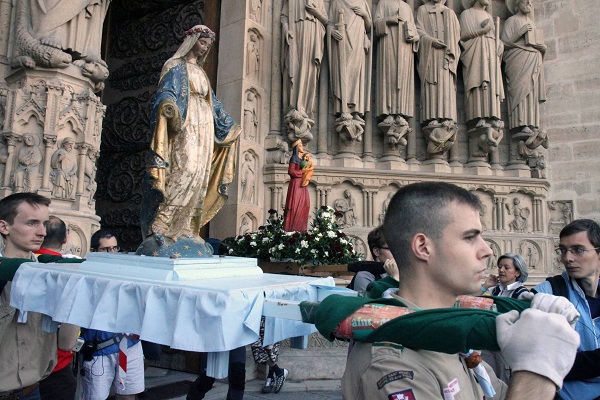
The pilgrim Virgins will be borne before the pilgrims the next three days.
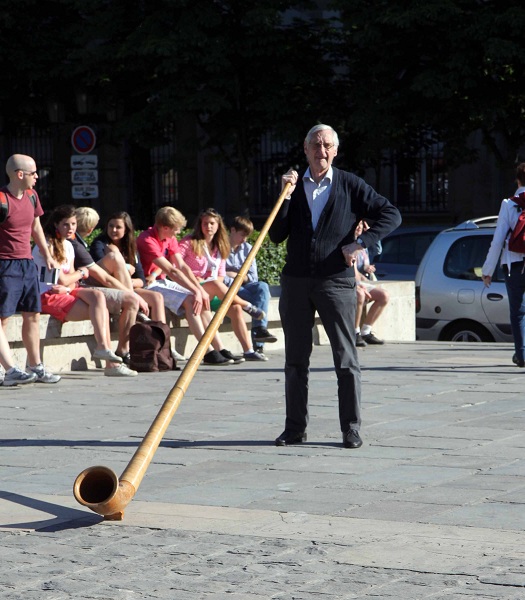
Musical accompaniment for the Swiss – an Alpenhorn.
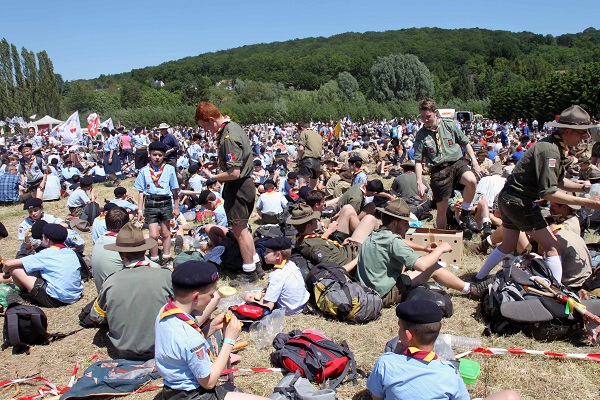
One of the first rest stops after leaving Paris. The preponderance among the pilgrims at this stage of French Boy Scouts and Guides is evident.
20 May
2012
Today Fr. Patric D’Arcy, newly ordained priest of the Archdiocese of New York, celebrated his first Mass – a Solemn High Mass in the Extraordinary Form – amid the Gothic splendor of Blessed Sacrament Church. Many clergy and seminarians were in attendance. A schola performed both chant and polyphony, including Allegri’s Miserere.
UPDATE:
(From Joseph Mercurio, Dennis Devito and Sean Connolly) The deacon was Fr. Steven Markontonis of St Philip Neri in the Bronx, Archdiocese of New York. Subdeacon was seminarian Nicholas Fernandez, Archdiocese of New York. Assistant priest was Fr. Brian Taylor of Saint Benedict in the Bronx, Archdiocese of NY. The Master of Ceremonies was Sean Connolly, seminarian of the Archdiocese of New York.
(From Charles Weaver, one of the singers) The choir for the mass was assembled for the occasion and was directed by Kyler Brown, organist of St. Jean Baptiste Church.
The music was as follows:
Mass ordinary, Gregorian Mass VIII Missa de Angelis
Sanctus and Benedictus from the Missa Brevis of Palestrina
Communion Motet Miserere Mei by Gregorio Allegri
Recessional Motet Exsultate Justi by John Williams

Msgr. Javier Garcia de Cardenas, of the personal prelature of Opus Dei, gave the homily. He spoke of the need to pray for vocations and for holy priests ans of the special role of a mother’s prayers.
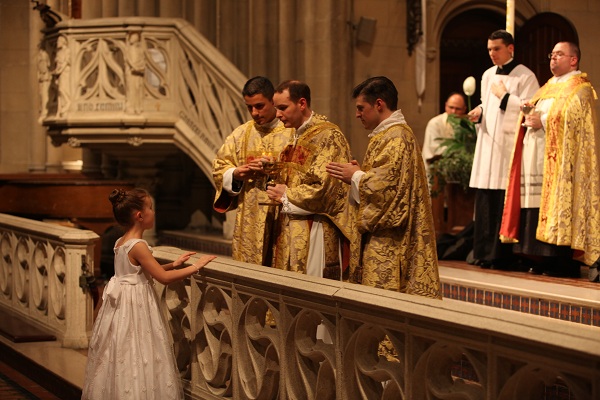
Fr. D’Arcy gave first holy communion to his niece, Abby.
It was a joyous event, indeed. But I have to point out this sobering fact: Father D’Arcy is the only 2012 graduate of Dunwoodie Seminary to enter the New York Archdiocese (which, the last time I looked, has a Catholic population of over 2.5 million, close to 500 parishes, and includes much of the most important city in the United States (and the world)) And Fr. D’Arcy is from Ontario, Canada. We certainly should be grateful that 100% of the new priests graduated for the Archdiocese this year are interested in the Traditional liturgy. But at this point an honest reexamination of the policies that have led to this recruiting drought – which has been going on for decades – is no longer avoidable. And to think that in the 1950’s the Archdiocese was allegedly suffering from too many priests….
8 Apr
2012
It may be presumptuous to compare a paint job with the building of Hagia Sophia. Yet the Basilica of St. John, Stamford (Msgr Stephen M.DiGiovanni, pastor) has accomplished a miracle of its own with the recently completed painting of the church. Thanks to the great efforts of this parish, we can now experience a complete Victorian church interior very much in accord with the doctrines of Pugin. And it is a wondrous sight! Not only is there a rich panoply of colors, but there is a clear order to this exuberance. The predominant greens and blues of the nave give way to the brighter gold, silver and red of the sanctuary. The entire interior is united by the gilt ribs and capitals of the vaults and columns.
Moreover, St. John’s has much more to offer than a magnificent color scheme – intact windows, altars, reliquaries, statues and woodwork combine to form a Victorian “total work of art.” Only one element is not fully present – the Traditional liturgy in all its richness. For it would seem elementary, having recreated with amazing fidelity the interior of this church in its 19th century glory, to proceed to the celebration of the fulness of the Extraordinary Form liturgy that inspired the creation of these works of art. Today, on Easter Sunday, a not insigniicant congregation at St. John’s attended a Traditional Low Mass – without music or servers. There is a magic to the “Murmer of the (low) Mass” (Sir Christopher Wren) that cannot be denied. Yet it would not seem too much to ask that for the main feast day of the year some music and at least one server could be provided….
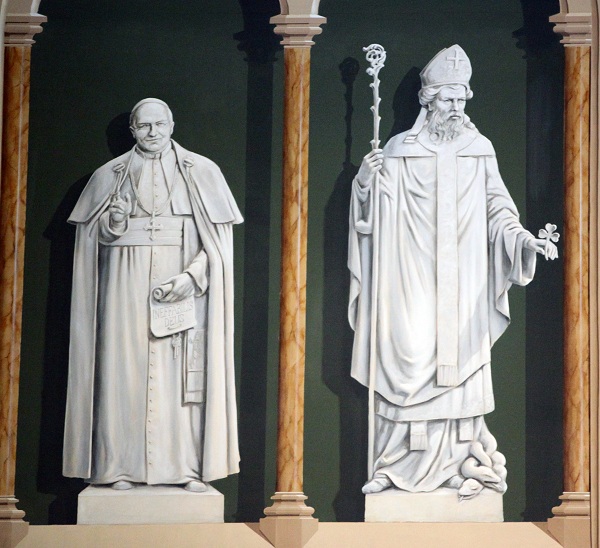
Next to St. Patrick, the image of a Pope which seems to bear the features of John Paul II but holds a scroll with Pius IX’s decree proclaiming the doctrine of the Immaculate Conception.
Strange – while parishes in Connecticut ( St. John; St. Mary, Norwalk)are painstakingly restoring the interiors of their historic churches, in the neighboring Archdiocese of New York churches having much greater artistic and historic value than these are falling into ruin or are “in play” for closure….
